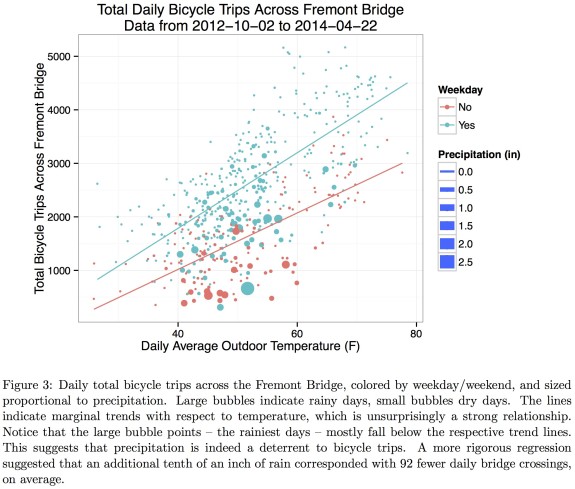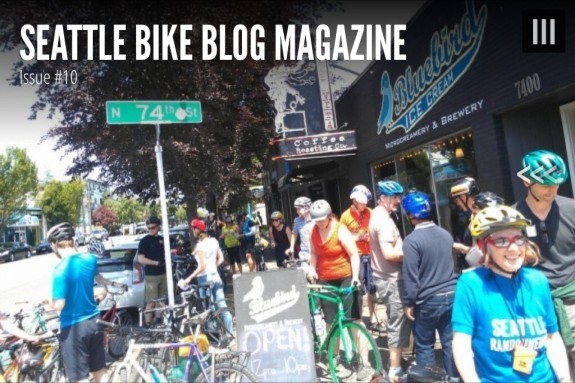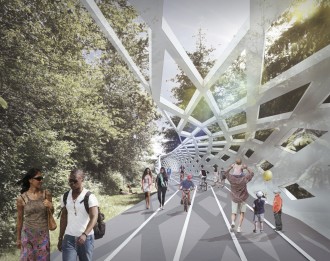EDITOR’S NOTE: This is the final post in a four-part series of posts this week by statistician Mike Logsdon. Mike bikes across the Fremont Bridge every day, and put together this analysis of the bike counter data “mostly for the amusement of friends and coworkers.”
Are More Seattleites Bicycling Across the Fremont Bridge? The short answer: Probably.
It’s tough to make any emphatic declarations from 18 months worth of recorded trips, as we have to investigate trends net of seasonal and weather effects. Once again we consider residual ridership — the difference between observed crossings and the number expected given season and weather. Time trends in Fremont Bridge bicycle crossings should manifest themselves as time trends in the residual trips. If daily crossings are growing, then the expected counts will exceed the observed counts at the beginning of the monitoring and reverse at the end of monitoring. If there is no time trend in bicycle crossings, then the residual trips should simply scatter around zero with no pattern.
Figure 6 shows the residual trips, plotted against date. A slight time trend revealed itself, to the tune of a 140 rider per day per year increase. This estimate, however, is extremely imprecise. Any time trend in ridership is simply small compared to the day-to-day variability in bicycle trips, given the duration of the observations.













